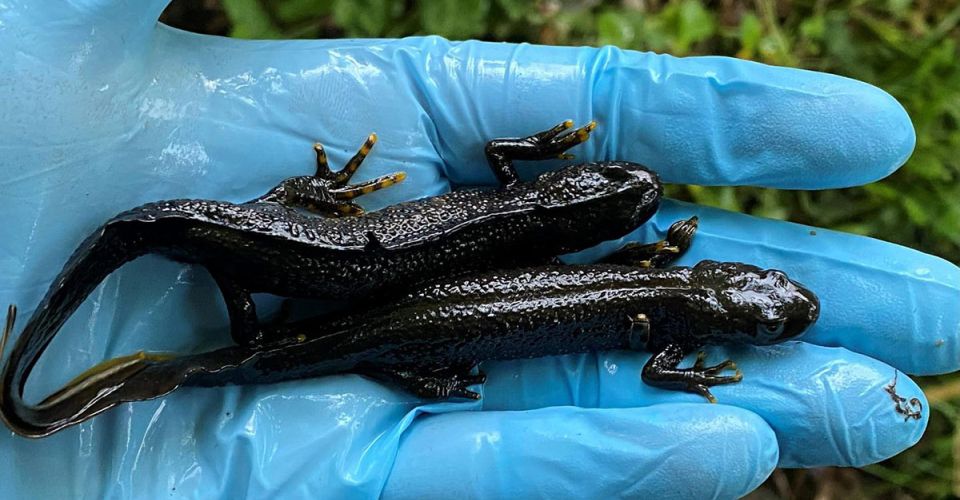Ecology Scoping Survey Guidelines

What is Scoping?
At its core, the purpose of an ecology scoping survey is to identify the ecological features that must be addressed for the development of a site, and to identify the ecological features that can be scoped out of (excluded from) the assessment. In this context, an ecological feature is a catch-all term to encompass habitats, species, ecosystems, and designated sites.
High level scoping surveys can be as brief as a background data search, for example to inform pre-purchase decisions, or can be highly detailed and supported with data from protected species surveys as required by the EIA (Environmental Impact Assessment) process.
Ecology by Design is a leading ecology consultancy. For more information about the types of ecological surveys we offer, click here.
Scoping Surveys for Protected Species
The ecology scoping survey will set out whether further ecological surveys will be required, and will detail the methods, the timings and the spatial scope of those surveys (for example whether the ecology surveys are restricted to the site boundary or include off-site areas). The benefit of conducting an ecology scoping survey is that it will provide an indication of the costs, timings and level of further survey work that will be required and will therefore allow for better planning and allocation of resources.
Scoping Process
Timings
The scoping survey should be conducted at the earliest opportunity in the project timeline, to ensure that costs are anticipated within the project budget, and that the design of the proposals can be tailored to the ecological features on site. The ecology surveyor may be able to suggest measures to avoid ecological impacts early on, which may not be possible once the design has been finalised, potentially resulting in mitigation, compensation and enhancement measures (and the associated costs) that might have been avoidable had ecology been considered sooner.
Early engagement with an ecologist will ensure that there is a proportionate effort spent on the significant project impacts, and allow other data requirements, such as input from noise and lighting specialists, to be identified and acted upon in good time.
Engaging Stakeholders
Within the EIA process, it is important to identify and engage stakeholders early on. These may be local communities, user groups or statutory and non-statutory consultees, who may place value on a particular ecological feature, or may have contextual knowledge of the site and an interest in the outcomes of the development. The input from stakeholders will inform which ecological features should be ear-marked for further consideration.
Establishing the Zone of Influence
The ‘Zone of Influence’ is the area over which the development proposals will have ecological impacts and is a key part of the ecology scoping survey. The size and shape of the Zone of Influence will depend on the ecological features present on site and the nature of the proposals. Some projects will have no impacts beyond the site boundary due to the small scale of works, and others will impact upon the home ranges of protected species or will impact designated sites many kilometres from the site. For example, vegetation clearance on a site between two great crested newt breeding ponds could result in the isolation of the two populations and destroy terrestrial resting and hibernation habitats. Impacts to an on-site river, such as changes to flow rate or pollution through construction activities, could have knock on effects downstream. In this scenario, the ponds and the river downstream of the site would be considered to be within the site’s Zone of Influence.
Scoping Surveys for Protected Species
Establishing the baseline
The ‘baseline ecological conditions’ of the site are the habitats and species present prior to any development works being undertaken, in the context of the existing management regime. Establishing the baseline condition will start with a background data search of statutory and non-statutory designated sites, protected and priority species and priority habitats, using data from local records centres and open access online tools. For an overview assessment, this may be sufficient to inform likely next steps, however most scoping surveys will require a site visit in the form of a preliminary ecological appraisal to ground-truth the habitats present on site and determine their suitability to support protected species.
Selecting Ecological Features for Detailed Assessment
Using the baseline ecological data, an assessment will be made of the likely impacts of the proposals, and any ecological features that are not present or will not be impacted will be scoped out. Some protected species are cryptic or leave little evidence of their presence and therefore cannot be identified (or scoped out) without targeted surveys.
Therefore, some protected species surveys conducted by a professional ecology surveyor may be required to fill in knowledge gaps.
These may include:
- Surveys for roosting bats of buildings, structures and trees, and surveys for foraging and commuting routes through activity surveys and static monitoring;
- Badger surveys through site walkovers looking for setts and evidence of badger activity, and sett monitoring using trail cameras;
- Surveys for reptiles by checking artificial refugia;
- Surveys for great crested newts in ponds through taking environmental DNA (eDNA) samples, bottle trapping, night-time torching, egg searches in vegetation, netting and refugia searches;
- Dormouse surveys using nest tubes and nut searches;
- Water vole and otter survey through site walkovers looking for evidence of water vole and otter along watercourses;
- White-clawed crayfish surveys through site walkovers looking for evidence and eDNA sampling;
- National Vegetation Classification surveys to identify notable plant species assemblages;
- Invertebrate surveys, targeted at identifying notable invertebrate species assemblages; and
- Breeding and wintering bird surveys through walking transects across the site and noting bird presence and behaviour, and vantage point surveys to identify bird migration and flight paths.
- Protected species surveys are often seasonally constrained to the times of year when the protected species in question is active or displaying the behaviours that will be impacted by the development, and therefore it is important that the initial assessments are conducted in good time to avoid delays further down the line.
If a protected species has not been detected within the Zone of Influence and the surveys have been conducted following best practice guidance without any significant limitations, then that species can be considered likely-absent and can be scoped out of the assessment.
Assessing Impacts
For all other ecological features within the Zone of Influence that have not been scoped out, an impact assessment will be required, whereby the impacts of the proposals on ecological features throughout the life of the project are determined (including pre-construction, during construction, during the life of the development and the decommissioning phase where applicable).
If specific input is required from other disciplines in order to assess impacts, then these will be flagged up as part of the scoping survey (for example it may not be possible to assess impacts to bat commuting routes without a lighting scheme from a lighting specialist).
Outcomes
At the end of the scoping process, you can expect:
- A list of ecological features which will require additional consideration and the Zone of Influence for each of those features
- The key impacts presented by the development proposals and, where necessary, a list of impacts for which more information is required (e.g. a lighting scheme)
- Recommendations for avoiding impacts, where possible, through amendments to the site design
- Details on any further surveys and how these should be conducted
- A list of ecological features that have been scoped out of the assessment, with justification for those conclusions.
The level of detail provided and the number of ecological features that can be scoped out will depend on the level of survey work that has been undertaken.
For more about our protected species surveys, click here. You can explore Ecology By Design’s range of ecology services here or make an enquiry today.





